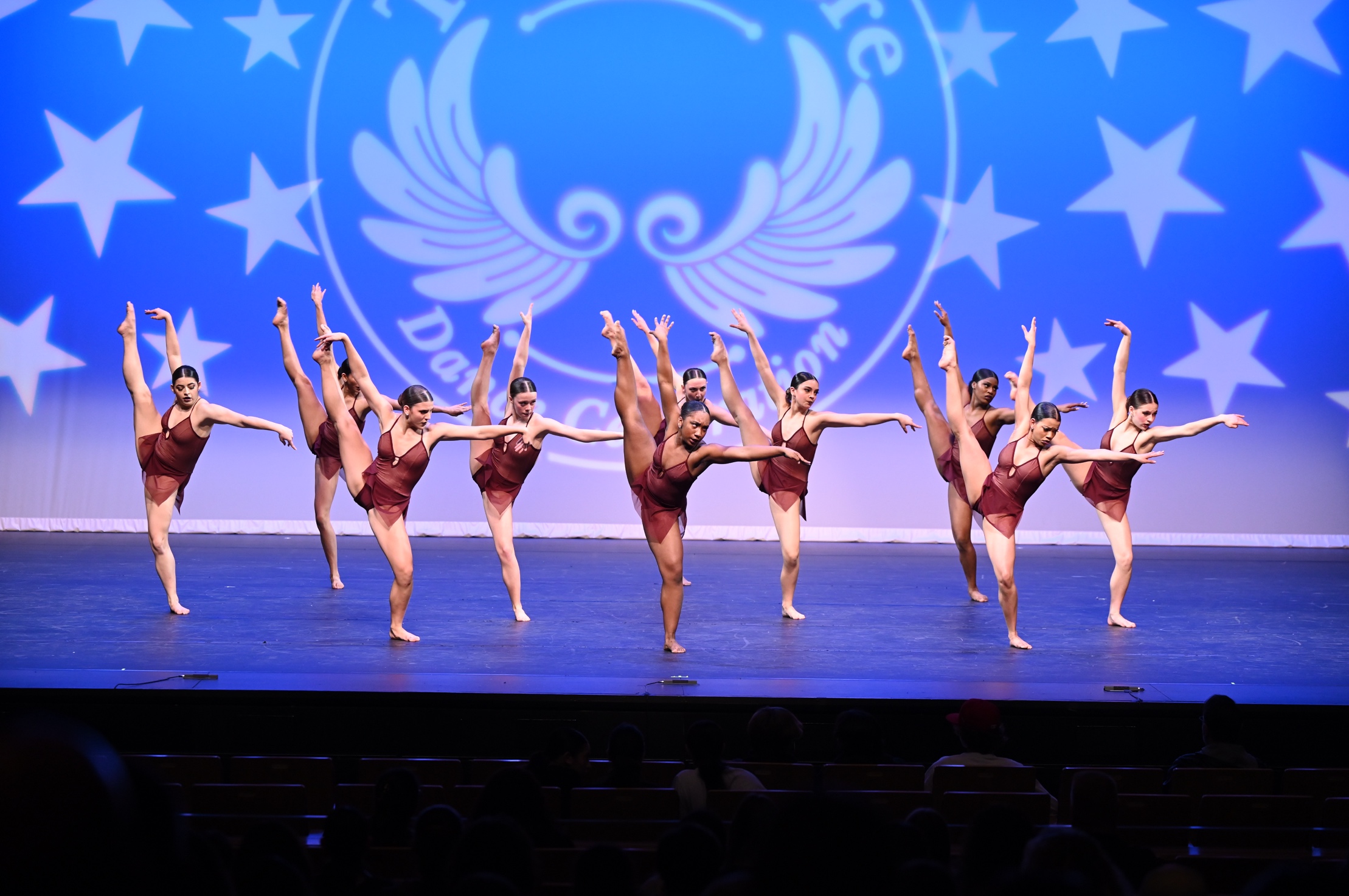
From the moment the LSU Tiger Girls begin their national-title–winning number, “Like a Boy,” every dancer is in perfect unison. (And we’re talking not-one-hair-out-of-place kind of unison.) They strut forward with their arms placed sharply by their sides on count one, and it’s difficult to find where one dancer starts and the other begins. That is, until a crisp ripple of prayer hands rolls through the group, drawing the viewer’s eye outward. What follows is more than two minutes of absolute precision, with each dancer’s angles, counts and movement-quality matching. It’s the kind of “clean” dance teachers everywhere dream about. But how did the team achieve it?

Cleaning choreography is the type of skill that seems like it should be intuitive but is actually really elusive. Simply going over counts and reminding dancers of their details doesn’t always cut it—leaving teachers, choreographers and dancers feeling frustrated. We caught up with three experts representing three different age/ability demographics (because “choreo-cleaning” isn’t a one-size-fits-all approach) to hear how they bring ultra-satisfying precision to the stage.
Cleaning Recreational Recital Dance Numbers
Perhaps the most challenging subset of dance choreography to clean is recreational recital numbers. You only get the students in the studio once or, maybe, twice per week, which means there’s only so much time to develop their technique, teach them the piece, and clean each step in detail. What’s more? These dancers are less likely to be persuaded to work by the allure of polished performances. Most of them are there to have fun!
After years of teaching recreational dancers at studios like The Dance Establishment and Creative Arts Academy in northern Utah, Tayler Lowe has created her own three-part syllabus for cleaning that has made all the difference.
First, she looks at the big picture of a piece. She assesses the choreography for any elements that might be beyond the students’ training level, and adjusts it to fit their needs. Then, she reviews the piece with her dancers, and gives clarity to both the steps and the timing. (For example, she will point out that their left arm should be up in their right battement, and that it should all happen on count one.) “Kids don’t always learn the same way,” Lowe says. “So I teach using both counts and lyrics or sounds.” Lowe then tests their knowledge with a fun game. “I pause the music on count seven [or whatever lyric goes with count seven] and see if they are all doing the same thing.” Finally, she has her dancers run the piece multiple times in order to get it into their bodies. If the choreography has already been set, Lowe says this point in the process should take about one month.
Second, Lowe homes in on her dancers’ details. “At this point we talk about transitions, focus and texture,” she says. For the majority of the remaining year, Lowe cleans just six counts of eight each week. To keep the dancers engaged through the semi-tedious work, she utilizes cleaning techniques masquerading as games. “I will have the dancers match up with a partner, pretend one of them is a teacher while the other is a student who doesn’t know the dance, and teach each other the choreography,” Lowe says. “The person pretending to teach has to really think through the details of the choreography, which I find is a really effective tool.” The following week she takes roughly 10 minutes to review what they cleaned the previous week before moving on to the next six sets of eight. Ideally you would plan your year to finish this step just a few weeks before the recital.
Lastly, she uses the remaining weeks of class to run the dance until the proper timing is solidified in her students’ muscle memory. “I take notes on some of the things the dancers are still making mistakes on and then give them corrections at the end of the number,” she says. “Then I stand up to demonstrate and show them the difference between what they are doing and what is actually correct. When they see how the incorrect movement messes up the formation or looks wrong next to other dancers, it helps solidify the correction.”
Note on differentiation: Steps 1, 2 and 3 work great for dancers 6 and up, but for dancers under 5, do only steps 1 and 3.
Lowe’s top choreo-cleaning tips:
1. Hold your students to a high standard. “With rec dancers it’s easy to get frustrated and give up when something looks ‘close enough’ to being correct,” Lowe says. “Don’t do that. You know they can do it—just keep working!”
2. Change your inflection to match the dynamic of the movement. “If it’s fluid movement I will sing ‘S-i-i-i-i-i-i-x,’ versus if it’s sharp, I will say ‘SIX!’” she says.
3. Stand when you clean. “They have to actually see the movement to do it correctly.”
4. Use positive feedback. “It can be tempting to say ‘You’re still not doing it right’ over and over until they get it and you move on,” she says. “Instead, when they finally get it, you should say ‘Oh my gosh you did it! You put your arms out on seven just like I wanted you to!’”
5. Turn your dancers into teachers. “If you have a student who’s struggling with a count of eight, ask them to go home and practice it, and then put them in charge of teaching it to the group for a week,” she says. “Tell them you really need their help.”
6. Drill, drill, drill. “If things aren’t getting fixed, I will have them mirror me, and we’ll stand there for as long as it takes until everyone matches,” she says. They get bored and annoyed, but eventually they figure it out. They start to help each other so they can move on, because they don’t want to sit there anymore.”
Cleaning Competitive Dance Numbers
Though the aim is the same, the approach to cleaning elite competition-dance numbers is slightly different from the one used for recital pieces. Your students’ polished technique developed through many hours of class and rehearsal each week gives them a solid foundation to start from. From there, it’s all about the details.
Joanne Chapman, whose studio, Joanne Chapman School of Dance, has won The Dance Awards’ Studio of The Year title twice, views cleaning as a group effort. Once a choreographer sets a piece, she has her dancers teach the dance to her staff by breaking it down step by step as a group. “If there are any disagreements about timing or details, majority rules,” she says. That, and she has footage from when the choreographer was there to refer back to. According to Chapman, her competitive dancers are so experienced that once they’ve reviewed the entire piece together, the cleaning sticks and it’s ready for the stage. “Depending on the length of the piece, that process can be done in two or three lessons. Other times it will take us more like six months.”

If the choreography is set in-house, Chapman likes to clean as she goes. “Each week we teach and clean four to eight counts per hour,” she says. “The following class we review what we did the week before, touch up details and go on.” Once the routine is finished, Chapman likes to return to the heavy dance sections in the number to make sure the dancers are matching. “Dance breaks are always a good place to start,” she says.
Chapman’s top choreo-cleaning tips:
1. Teach your students that a correction is not just good—it’s gold! “You cannot clean if children are upset about being corrected,” Chapman says. “Teach them that if they use the gold you give them, they’ll receive even more gold in return.”
2. Hold your dancers accountable. “You’re not setting a child up for success if you don’t hold them accountable,” she says. “We are tough and to the point. If they aren’t giving their best effort we’ll say, ‘You are a better dancer than that.’ Because they are, and what they do affects the group.”
3. Make a big deal out of dancers fixing their corrections. “Praise the students for their attention to detail, as opposed to berating the child who is struggling to get it together.”
4. Clean from the back of the room. “Stand behind your students and watch them in the mirror,” she says. “This helps you see the bigger picture of the piece.”
Cleaning Collegiate Dance Numbers
By the time dancers land a spot on a collegiate dance team, they should be so experienced that their bodies are like moldable clay in their coache’s hands. Still, the caliber of cleanliness at that level is so high across the country—hours upon hours of work is still necessary.
The LSU Tiger Girls spend roughly eight hours (including lunch and water breaks) in rehearsal per day when prepping for Nationals. “The full cleaning process is two and a half months, but we clean like it’s life or death for four weeks,” says their coach, Kandace Hale. They begin by slowly reviewing the formations and transitions set by their choreographers. “We take two weeks where every practice we are just making sure people can get to their spots by the right count (not early or late), and that the depth of the formation is being showcased.”

Next, Hale divides the dances into four sections that are roughly 30 seconds each, and spends up to one week deep cleaning each of them. “It’s a very long process,” she says. “Some days we’ll only get through three eight-counts because we clean everything from their eyebrows to their toes.” Hale likes to break down the counts with texture in her voice, so the dancers know which dynamics to hit and when.
Once she’s established the dynamics of the section, she clarifies where the dancers’ focus should be. “Sometimes your head is front, but your eyeballs are looking at where you need to go next,” she says. “It makes them look like they are second-guessing themselves, and they really need to have and show confidence.”
During their water breaks, Hale expects her dancers to write their corrections down in their journals to help them stick in their minds. “Their body needs to have breaks, but their minds still need to be focused,” she says. “Then they need to go home and review it all.”
Hale’s top choreo-cleaning tips:
1. Give yourself ample time. “When you run out of time, there’s only so much you can do,” she says. “Give yourself extra weeks to clean, just in case. Most of the time you’ll end up needing all of them.”
2. Encourage leadership. “As coaches we try to build leadership skills in our dancers, and encourage them to talk through challenges they may be having, and problem-solve with their teammates.”
3. Utilize groups. “We often have the dancers clean sections in groups, watch each other, and provide corrections for one another,” she says. “The motivation you get when your coach tells you to do something is different from when a teammate says it. Both can be useful.”





